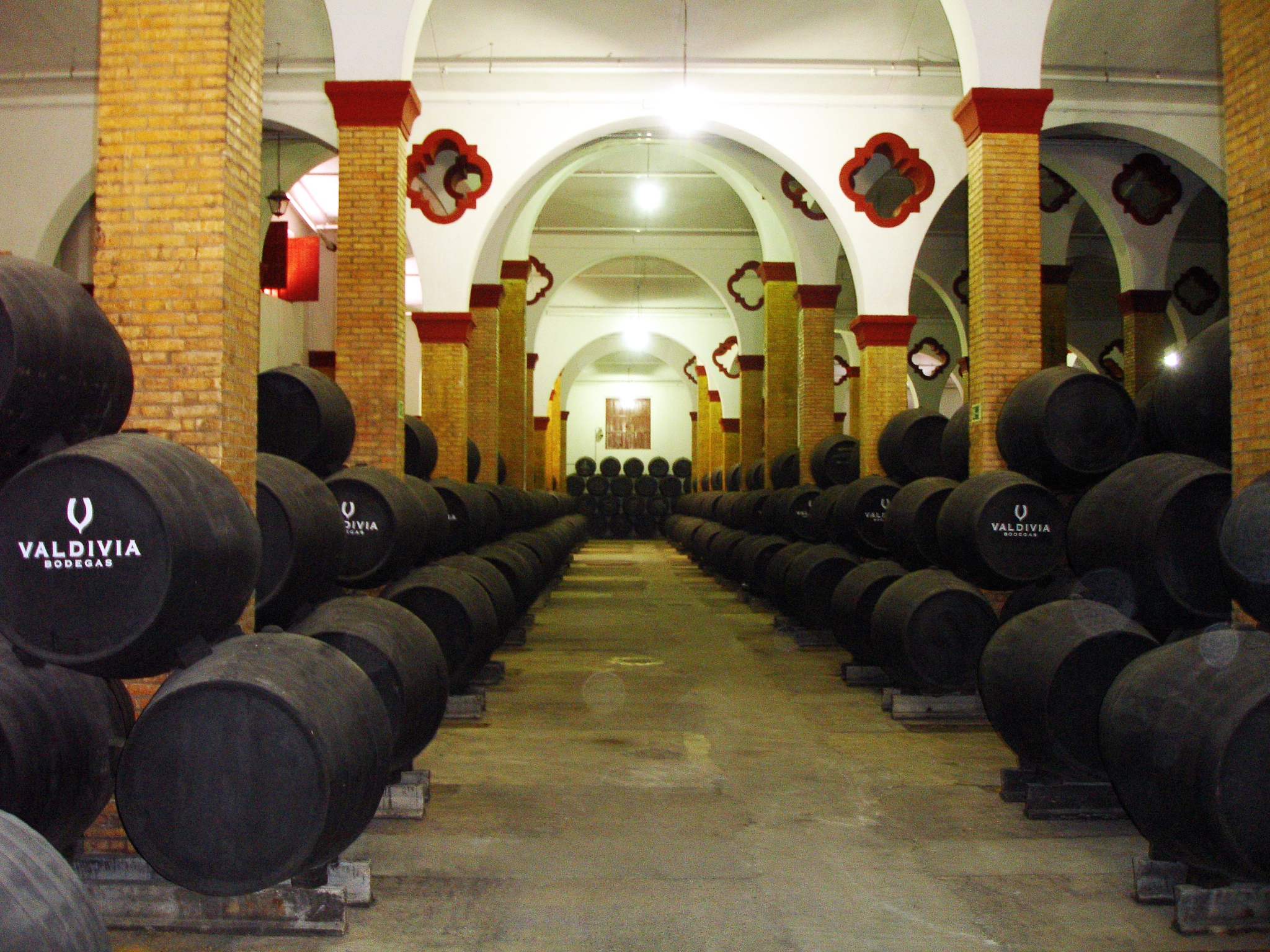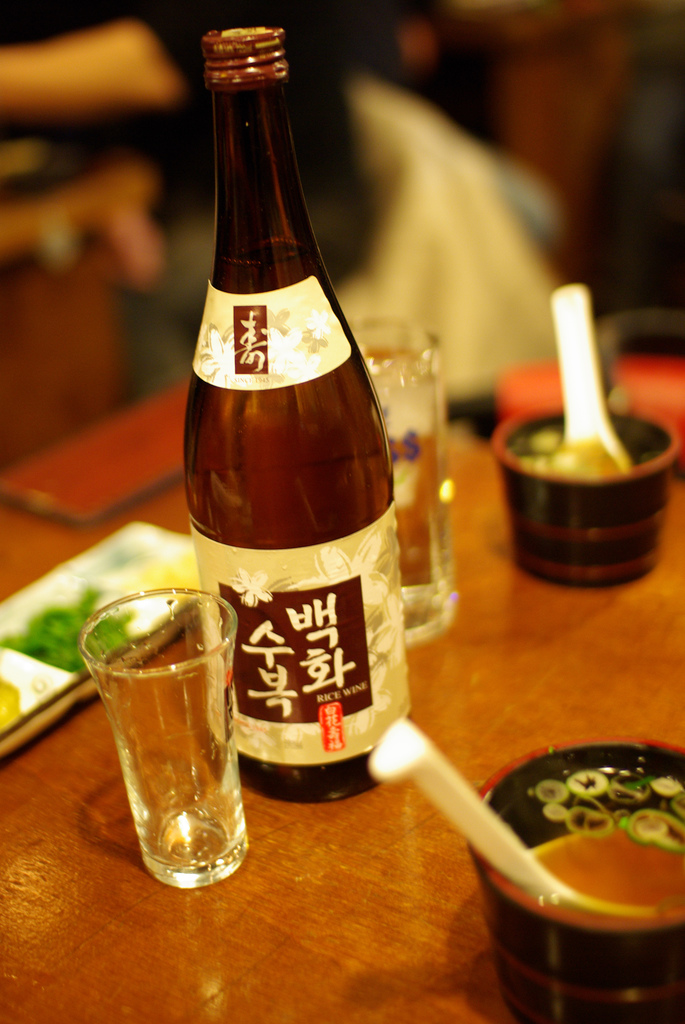|
Gwaha-ju
''Gwaha-ju'' () is a traditional Korean fortified rice wine. The refined rice wine ''cheongju'' (also called '' yakju'') is fortified by adding the distilled spirit soju to produce ''gwaha-ju''. Popular varieties include ''gangha-ju'' () of Boseong and Yeonggwang in South Jeolla Province, ''sinseon-ju'' () of Namwon in North Jeolla Province, and ''yak-soju'' () of Suwon in Gyeonggi Province. Name The word ''gwaha-ju'' () consists of three syllables: ''gwa'' () meaning "to pass" or "to last", ''ha'' () meaning "summer", and ''ju'' () meaning "alcoholic beverage". The name suggests that the rice wine retains its flavor after the hot and humid summer, due to the fortification (addition of soju). Regional varieties of ''gwaha-ju'' are called by their own regional names such as ''gangha-ju'' (), ''sinseon-ju'' (), and ''yak-soju'' (). Other names mentioned in old documents include ''gwaha-baekju'' () in ''Sanga Yorok'', a mid-15th century cookbook, and ''ohyang-soju'' () in ' ... [...More Info...] [...Related Items...] OR: [Wikipedia] [Google] [Baidu] |
Fortified Wine
Fortified wine is a wine to which a distilled spirit, usually brandy, has been added. In the course of some centuries, winemakers have developed many different styles of fortified wine, including port, sherry, madeira, Marsala, Commandaria wine, and the aromatised wine vermouth. Production One reason for fortifying wine was to preserve it, since ethanol is also a natural antiseptic. Even though other preservation methods now exist, fortification continues to be used because the process can add distinct flavors to the finished product. Although grape brandy is most commonly added to produce fortified wines, the additional alcohol may also be neutral spirit that has been made from grapes, grain, sugar beets or sugarcane. Regional appellation laws may dictate the types of spirit that are permitted for fortification. For example, in the U.S. only spirits made from the same fruit as the wine may be added. The source of the additional alcohol and the method of i ... [...More Info...] [...Related Items...] OR: [Wikipedia] [Google] [Baidu] |
Fortified Wine
Fortified wine is a wine to which a distilled spirit, usually brandy, has been added. In the course of some centuries, winemakers have developed many different styles of fortified wine, including port, sherry, madeira, Marsala, Commandaria wine, and the aromatised wine vermouth. Production One reason for fortifying wine was to preserve it, since ethanol is also a natural antiseptic. Even though other preservation methods now exist, fortification continues to be used because the process can add distinct flavors to the finished product. Although grape brandy is most commonly added to produce fortified wines, the additional alcohol may also be neutral spirit that has been made from grapes, grain, sugar beets or sugarcane. Regional appellation laws may dictate the types of spirit that are permitted for fortification. For example, in the U.S. only spirits made from the same fruit as the wine may be added. The source of the additional alcohol and the method of i ... [...More Info...] [...Related Items...] OR: [Wikipedia] [Google] [Baidu] |
Eumsik Dimibang
The ''Eumsik dimibang'' or ''Gyugon siuibang'' is a Korean cookbook written around 1670 by Lady Jang (張氏, 1598~1680) from Andong Clan, Gyeongsang Province during the Joseon Dynasty. The author was in the noble ''yangban'' class and the book is a manuscript written in hangul (Korean alphabet). ''Eumsik dimibang'' encompasses Korean cuisine in general and deals with various ways of storing foods. The book also contains 51 different entries related to traditional alcoholic beverages. It includes the earliest printed recipe for '' gwaha-ju'' (fortified rice wine). Since the book is the oldest and detailed cookbook written by a woman in Korean history, it is considered a valuable document for researching Korean cuisine. See also *''Siuijeonseo'', a 19th century Korean cookbook *''Gyuhap chongseo'', a Korean women's encyclopedia *Korean cuisine Korean cuisine has evolved through centuries of social and political change. Originating from ancient agricultural and nomadi ... [...More Info...] [...Related Items...] OR: [Wikipedia] [Google] [Baidu] |
Yakju
''Cheongju'' (; literally "clear wine"), sometimes romanized as ''Chungju'', is a clear, refined rice wine of Korean origin. Names The word ''cheongju'' () consists of two characters: ''cheong'' () meaning "clear" and ''ju'' () meaning "alcoholic drink". It contrasts with ''takju'' (), as "tak" () means "turbid". The word ''takju'' usually refers to ''makgeolli'' (milky, unrefined rice wine). The hanja characters 淸酒 are the same as the kanji pronounced ''seishu'' used on the labels of sake. The native Korean word for "clear wine", ''malgeun-sul'' (), is also used to refer to ''cheongju''. Another name for ''cheongju'' is ''yakju'' (), which literally translates into "medicinal wine". History According to '' Things on Korea''—a 12th-century book on Korea written by Song Chinese scholar Sun Mu (孫穆)—the Goryeo people used non-glutinous rice to brew rice wine. Another 12th-century Chinese book, '' Illustrated Account of Goryeo'', reports that Korean rice wine th ... [...More Info...] [...Related Items...] OR: [Wikipedia] [Google] [Baidu] |
Rice Wine
Rice wine is an alcoholic beverage fermented and distilled from rice, traditionally consumed in East Asia, Southeast Asia and South Asia. Rice wine is made by the fermentation of rice starch that has been converted to sugars. Microbes are the source of the enzymes that convert the starches to sugar.Huang, H. T. "Science and civilization in China. Volume 6. Biology and biological technology. Part V: fermentations and food science." (2000). Rice wine typically has an alcohol content of 18–25% ABV. Rice wines are used in East Asian, Southeast Asian and South Asian gastronomy at formal dinners and banquets and in cooking. List of rice wines See also * Beer * Rice wine cup * Japanese rice wine * Korean alcoholic beverages * Chinese alcoholic beverages References Further reading * Campbell-Platt, Geoffrey (2009)''Food Science and Technology'' John Wiley & Sons John Wiley & Sons, Inc., commonly known as Wiley (), is an American multinational publishing company f ... [...More Info...] [...Related Items...] OR: [Wikipedia] [Google] [Baidu] |
Cheongju (beverage)
''Cheongju'' (; literally "clear wine"), sometimes romanized as ''Chungju'', is a clear, refined rice wine of Korean origin. Names The word ''cheongju'' () consists of two characters: ''cheong'' () meaning "clear" and ''ju'' () meaning "alcoholic drink". It contrasts with ''takju'' (), as "tak" () means "turbid". The word ''takju'' usually refers to '' makgeolli'' (milky, unrefined rice wine). The hanja characters 淸酒 are the same as the kanji pronounced ''seishu'' used on the labels of sake. The native Korean word for "clear wine", ''malgeun-sul'' (), is also used to refer to ''cheongju''. Another name for ''cheongju'' is ''yakju'' (), which literally translates into "medicinal wine". History According to '' Things on Korea''—a 12th-century book on Korea written by Song Chinese scholar Sun Mu (孫穆)—the Goryeo people used non-glutinous rice to brew rice wine. Another 12th-century Chinese book, '' Illustrated Account of Goryeo'', reports that Korean rice wine t ... [...More Info...] [...Related Items...] OR: [Wikipedia] [Google] [Baidu] |
Xian (Taoism)
''Xian'' () refers to a person or similar entity having a long life or being immortal. The concept of ''xian'' has different implications dependent upon the specific context: philosophical, religious, mythological, or other symbolic or cultural occurrence. The Chinese word ''xian'' is translatable into English as: * (''in Daoist philosophy and cosmology'') spiritually immortal; transcendent human; celestial being * (''in Daoist religion and pantheon'') physically immortal; immortal person; an immortal; saint * (''in Chinese alchemy'') alchemist; one who seeks the elixir of life; one who practices longevity techniques ** (''or by extension'') alchemical, dietary, or qigong methods for attaining immortality * (''in Chinese mythology'') wizard; magician; shaman; sorcerer * (''in popular Chinese literature'') genie; elf, fairy; nymph; (''xian jing'' is fairyland, faery) * (''based on the folk etymology for the character , a compound of the characters for ''person'' and ''mounta ... [...More Info...] [...Related Items...] OR: [Wikipedia] [Google] [Baidu] |
Naver
Naver (Hangul: 네이버) is a South Korean online platform operated by the Naver Corporation. It was launched in 1999 as the first web portal in South Korea to develop and use its own search engine. It was also the world's first operator to introduce the comprehensive search feature, which compiles search results from various categories and presents them in a single page. Naver has since added a multitude of new services ranging from basic features such as e-mail and news to the world's first online Q&A platform Knowledge iN. As of September 2017, the search engine handled 74.7% of all web searches in South Korea and had 42 million enrolled users. More than 25 million Koreans have Naver as the start page on their default browser and the mobile application has 28 million daily visitors. Naver has also been referred to as 'the Google of South Korea'. Owing to its rising popularity in Japan, Naver is now competing with Kakao to claim position in Japanese market of web novel ... [...More Info...] [...Related Items...] OR: [Wikipedia] [Google] [Baidu] |




